So why not bake a chocolate cake that looks like rich, nutrient-dense soil?
There I was wandering through the greenhouse of The Agrarian Kitchen in New Norfolk, Tasmania, when I came across row upon row of seedling trays. Tiny little basil shoots were just peeping out the top, but it was the organic, biologically rich seedling mix that had me transfixed.
“That looks just like chocolate cake” I thought to myself.
It planted a seed, so to speak. As soon as I got home, I started thinking about baking a cake that would celebrate soil regeneration and all those good people who work so hard to grow all the excellent things that you and I eat. Something that would also celebrate cake, of course.
Do the garden tour at The Agrarian Kitchen’s magnificent sheltered, stone-walled, no-dig garden and you’ll be amazed at how they re-purpose pretty much everything into compost to go back into the garden. To the point, I’ll have you know, of pyrolyzing the bones left after their whole-beast butchery in the wood-fired oven overnight, converting them into charcoal, rather than ash, to benefit the soil even further.
The soil at three-hatted restaurant Brae in the western district of Victoria is good and chocolatey too, as my favourite suede boots can attest. And at Braidwood’s Terra Preta Truffles near Canberra, Peter Marshall’s regenerated soil looks EXACTLY like Elizabeth David’s flourless chocolate cake. It was all I could do to not shovel it into my mouth.
This is particuarly resonant because, as we know, soils are crucial to managing climate change. Regeneration International describes regenerative agriculture as “a system of farming principles and practices that increases biodiversity, enriches soils, improves watersheds, and enhances ecosystem services,” while at the same time sequestering carbon and building resiliency. Matthew Evans and chef Dan Barber cover this well in their writings and their lives; and while on the subject, don’t miss Joel Salatin, the Lunatic Farmer, or anything ever written by Wendell Berry.
Regenerative farmers talk a lot of microbial diversity, of stewardship, and of symbiosis, redefining the relationship between humans and plants (and animals).
So here’s my Chocolate Compost Cake, which has no dirt, no bones and no soil in it. But isn’t it gorgeous? Don’t you feel an instant, symbiotic bond with it?
To explain, I started with a fairly classic chocolate cake, made with oil instead of butter because I wanted a dense fudginess in the middle. Like a mud cake, but not as heavy.
Black sesame seeds are deployed throughout, which soften into something nutty and – yes – chocolatey.
Then I poured a two-ingredient chocolate ganache on top, and scattered the whole thing with dirt. Sorry, I mean ‘Dirt’ (imagine a small copyright symbol to the top right), my invented-on-the-spot mix of bittersweet cocoa powder, black sesame seeds, ground almonds and icing sugar. And dang, if the icing sugar didn’t look like flecks of bone throughout the mix…
Bake it for friends who are gardeners and farmers, and those who support them, those who care.
But I forgot to say why I was thinking of cake in the first place.
It’s because this is my 200th post since starting Jill Dupleix Eats on New Year’s Eve in the middle of lockdown.
Good grief. No wonder I need cake. I think we all need cake.
CHOCOLATE COMPOST CAKE
150 g self-raising flour
50 g dark, Dutch-process cocoa powder
150 g brown sugar
75 g black sesame seeds
Pinch of sea salt
3 eggs, beaten (around 65 g)
100 ml light olive oil, grapeseed or vegetable oil
150 ml buttermilk
1 tsp vanilla extract or paste
Chocolate ganache, recipe below.
Chocolate dirt, recipe below
Heat the oven to 180C. Spray a 20 cm square cake tin with oil and line with baking paper, leaving enough overhang to use as ‘handles’ when removing cake.
Sift flour and cocoa powder into a large bowl, add sugar, black sesame seeds and sea salt, and lightly mix to combine.
In a second bowl, whisk the beaten eggs, then whisk in the oil, buttermilk and vanilla (it will look weird, but press on).
Add the liquid mixture to the dry ingredients, whisking until just combined and no longer streaky.
Scrape the mixture into the cake tin, and bake on the middle shelf for 30 minutes. Test with a bamboo skewer – it should come out not quite clean, a bit muddy.
Allow to cool, then lift the cake out of the cake tin and peel off the paper.
Make the ganache (see below).
Place the cake on a wire rack above a newspaper to catch drips, and pour the chocolate ganache onto the cake, smoothing it out and just over the edges with a spatula or indeed, your fingers.
Scatter the top thickly with chocolate dirt (recipe below), and cut into perfect squares.
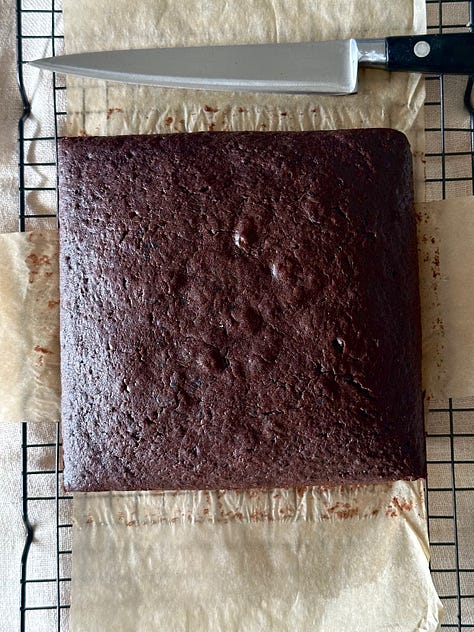
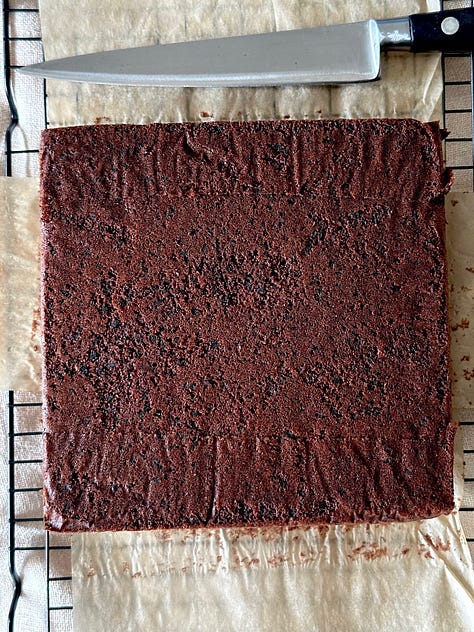
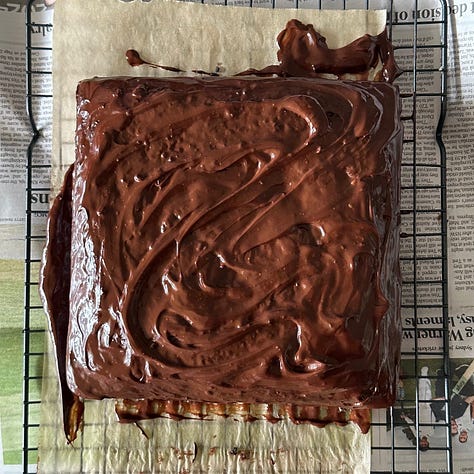
CHOCOLATE GANACHE.
100 ml whipping (thickened) cream
100 g bittersweet chocolate eg 70% Lindt
Chop the chocolate into small pieces.
Heat the cream in a small pan to come just to the boil (don’t boil it).
Remove from the heat, add the chocolate, and leave to soften for a minute, then stir gently until rich, thick and dark.
CHOCOLATE DIRT.
2 tsp black sesame seeds
2 tbsp almond meal
1 tbsp icing sugar
1 tbsp cocoa powder
Mix all ingredients in a bowl and spoon over the top of the iced cake.
Tip: Don’t overbake the cake – you want it still a little fudgy inside.
Tip: The cakes rises slowly, and presents as relatively flat on top. If a gentle mound rises in the middle, wait until the cake has cooled, and use a bread knife to gently slice it off, levelling the top for the chocolate ganache. If you want it perfectly flat on top, slice off the mound then turn the cake over so the flat bottom is your top.
Tip: Use a ruler to help mark out the cake in quarters before you start slicing. Once you have sliced through the cake, give the knife a little wiggle to help the squares move away from each other, just like the seedling trays.
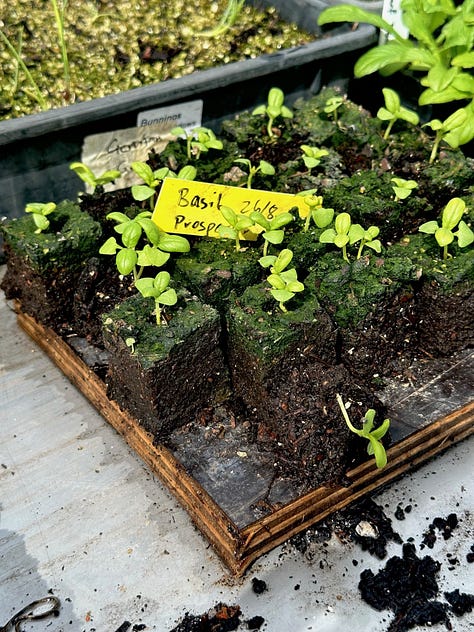
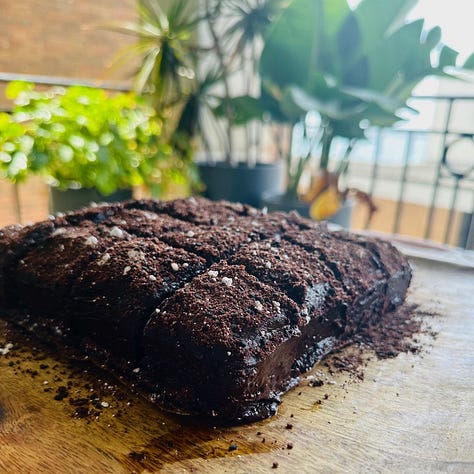
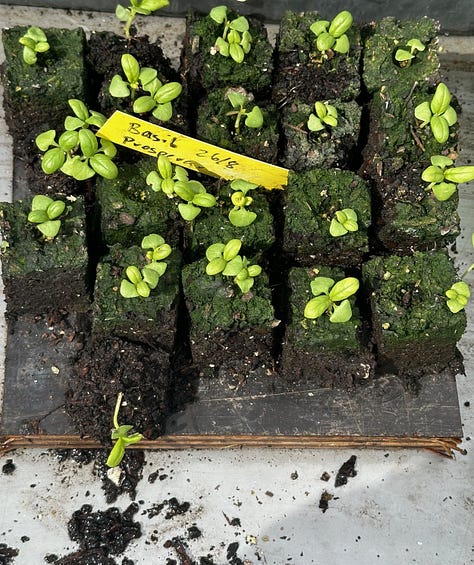
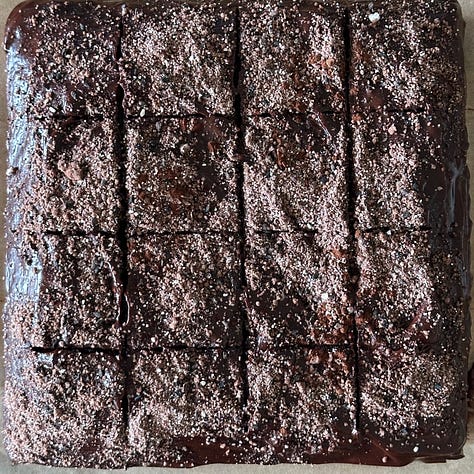
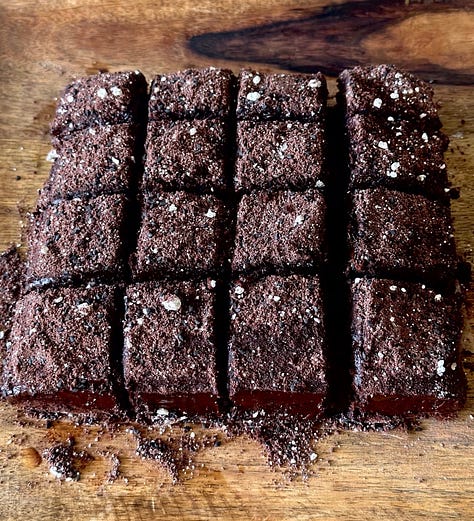
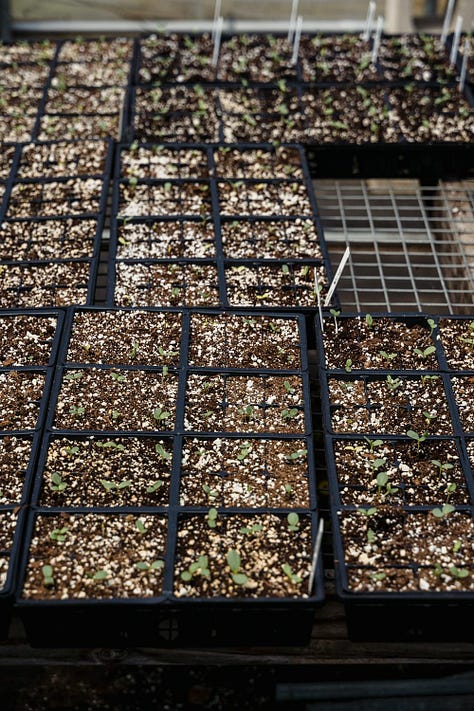
Thanks for dropping by! And as always, thanks for your comments and suggestions. Special thanks to Terry for finding the black sesame seeds. And for thinking the two pics bottom left were Theirs and Mine, instead of Mine and Theirs.
I would like to acknowledge the traditional owners of the lands and waters upon which I work, live, cook and play; the Gadigal people of the Eora Nation, and pay my respects to Elders past and present, and to the continuing strength and resilience of First Nations people, communities and cultures.



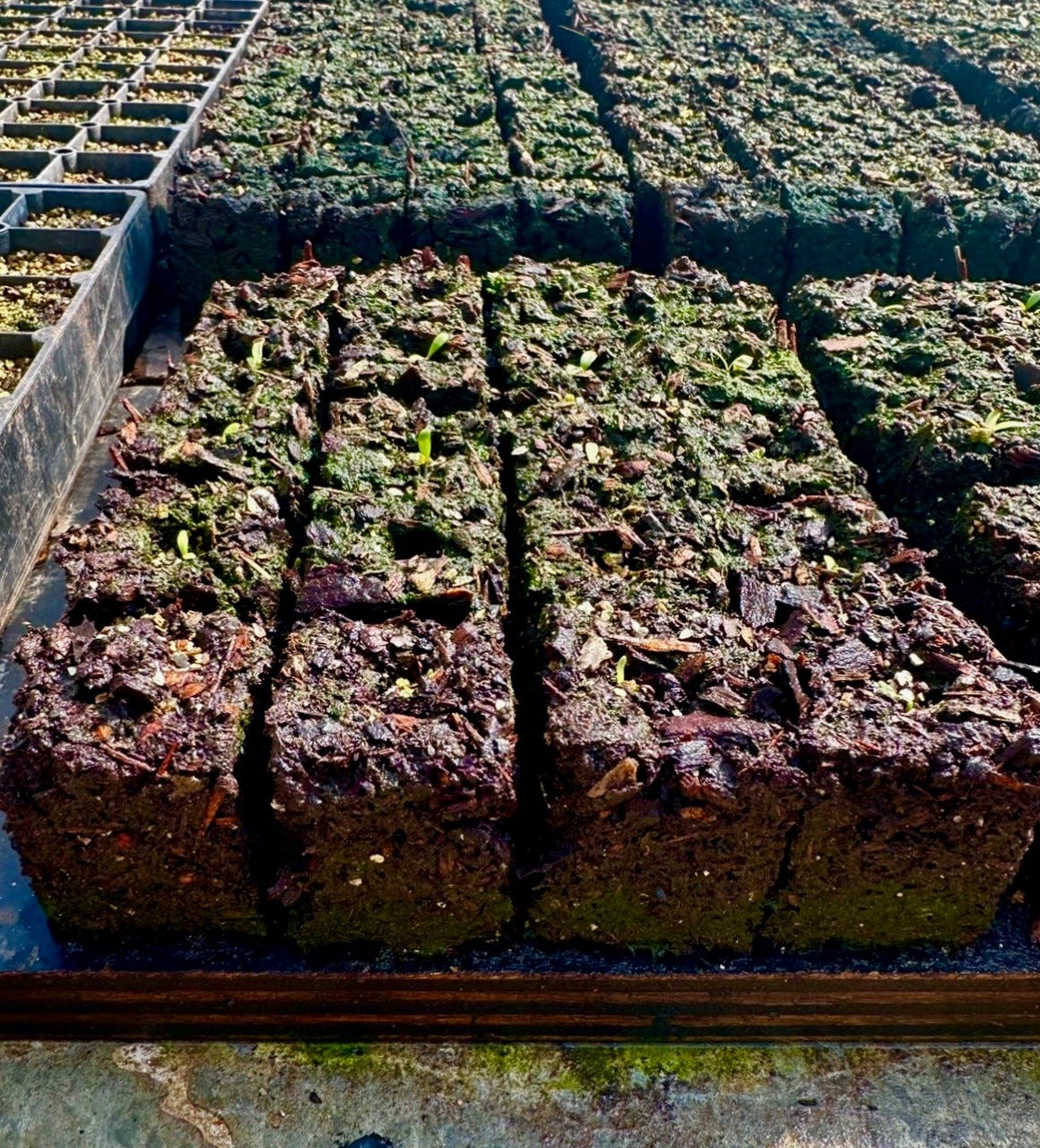

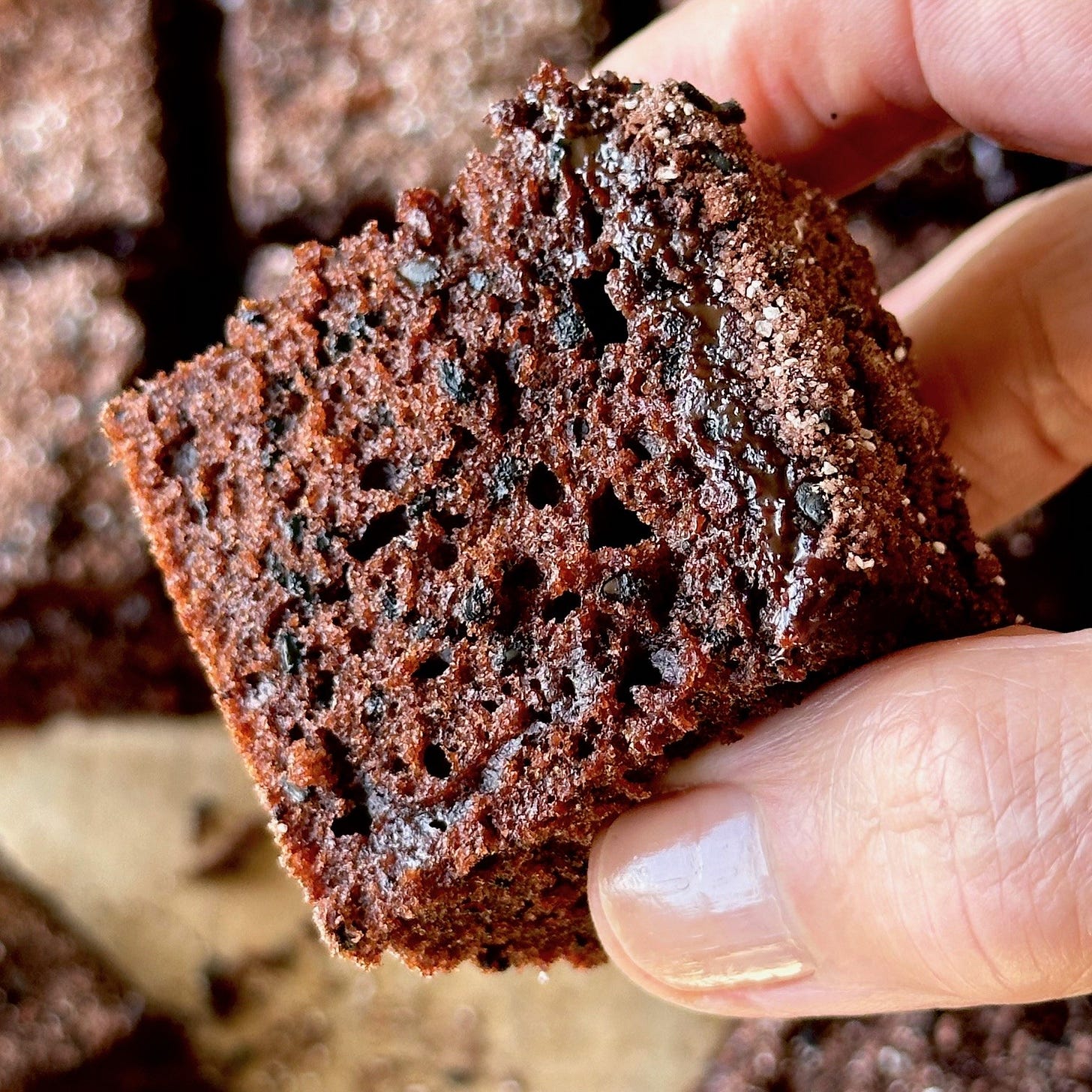

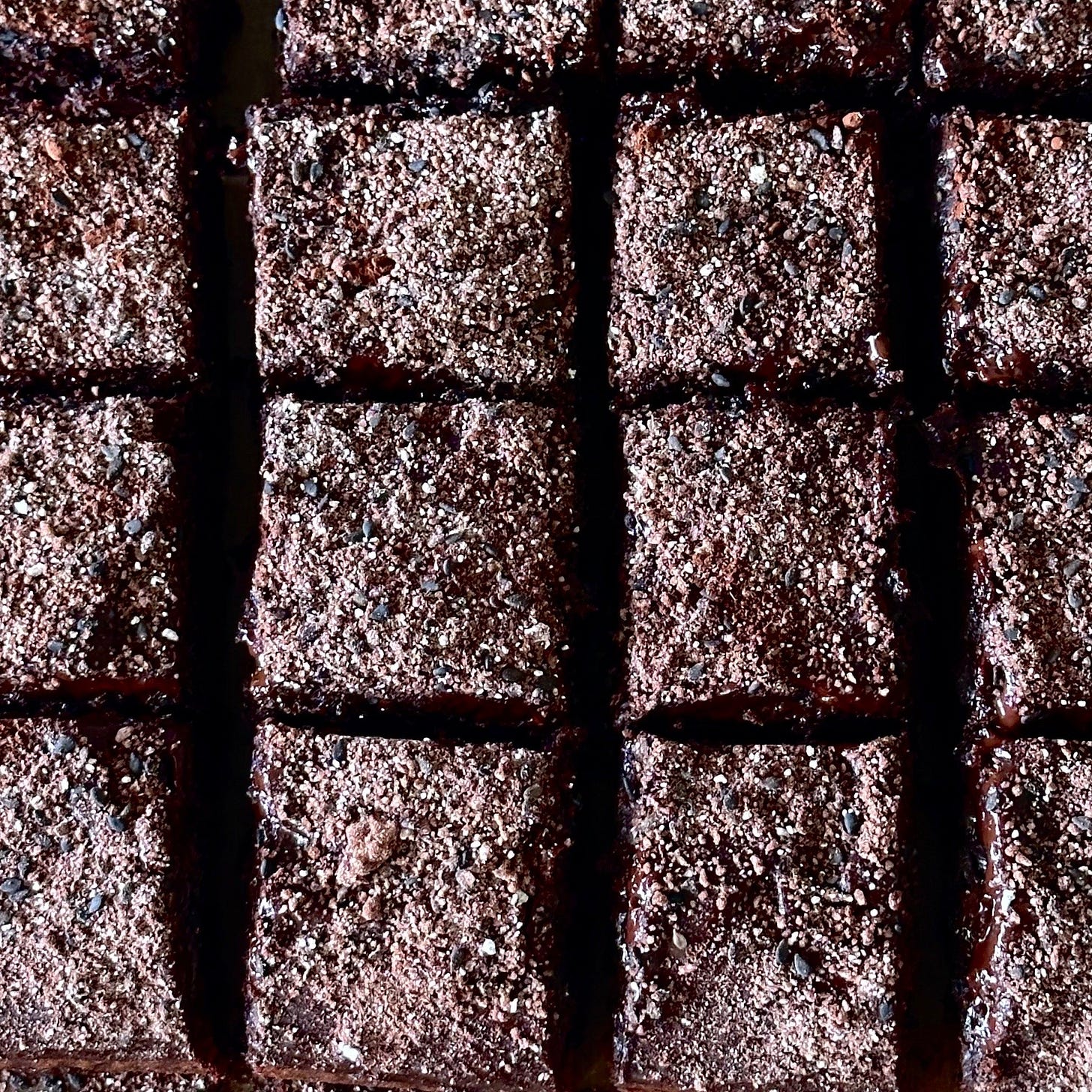
Congratulations, Jill! Your email is always my favourite of the week! Here's to the next 200.....
Great looking cake Jill! World Soil Day happens every year on the 5th of December. To celebrate many people often bake cakes that look like soil types, farming scenes, soil profiles etc to share with friends, colleagues, the public. Education and delicious food combined.
https://www.fao.org/world-soil-day/en/